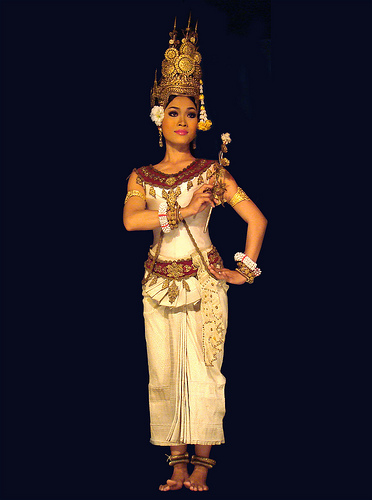Khmer classical dancers use stylized movements and gestures to tell a story much like a mime, but in a more vague way as most audiences will probably never understand more than a couple of gestures. Dancers do not speak or sing; they dance with a slight smile and are never supposed to open their mouths. Khmer classical dance can be compared to French ballet as it requires years of practice and stretching at a young age so the limbs become very flexible. Dancers flex their fingers backwards, as well as toes when dancing.
Gestures in Khmer classical dance are called kbach (style). These kbach are broken down into several categories depending on which body parts are involved. Hand gestures that involve fingers are called cheep which means to pinch. These hand gestures can represent various things from nature such as fruit, flowers, and leaves. When put together in combination they can have different meanings.


Resource: www.wikipedia.org


















No comments:
Post a Comment